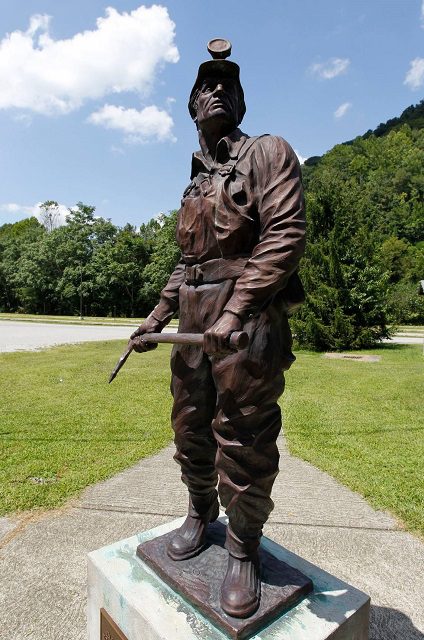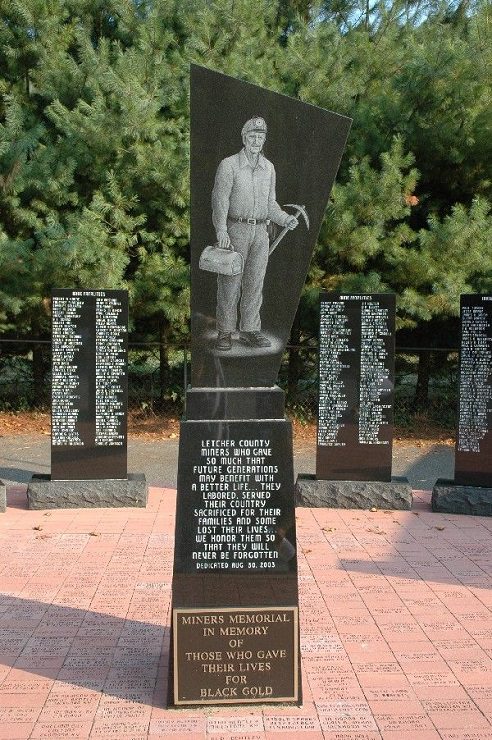Over the years the dominant and always relevant question in terms of labor relations and rights is this… “Which side are you on?”
A question that very rarely has a straight answer, in times when labor rights and values are violated.
As when people are being targeted by states, governments, employers, the fear of reaction is there.
These four words gave the power of expression through an American labor song written for the strikes of Kentucky miners during the 1930s.
“Which Side Are You On?” was written by Florence Reece and has since been viewed as a hymn to workers.
The band Panopticon included it in the album “Kentucky“, released in 2012, and it is the reason to investigate and narrate the events that led to its creation.
Strikes, clashes and bloodshed in Harlan County, Kentucky in 1931.
When the miners of Harlan County launched a series of industrial actions, culminating in a strike and violent clashes.
Tensions that eventually made the area be known as the “Bloody Harlan“.
Harlan
Harlan County from the early 20th century until the mid-20th century was famous for its natural beauty but also for many coal mines, poverty, and extreme conservative rulers.
Prior to 1911, Harlan was a quiet rural community of small mountain farms. The main lines of business were agriculture and lumbering with some alcohol production.
It was already known, however, that beneath the ridges in the pine-covered mountains along the Cumberland River, the soil was rich in soft carbon.
Which was mostly used for steel production. However, there was no way to export it to the Great Lakes.
Then came the railway…
All the features of the countryside changed overnight.
The green hills were destroyed by the coal carriers and by mine openings on the slopes.
Piles of black waste and excavated land began to appear on the hills.
There were no cities, there were no miners‘ houses, except for the workhouses built by the employers, and thus an industrial city was created.
During the Great Depression, internal migration to Harlan reached a peak.
The crash and the financial crisis have led to a rapid increase in mining and coal production.
Consequently, thousands of unemployed people moved to areas where they hoped to find at least some basic working opportunities.
Working for meager to degrading salaries, with zero security measures and with only temporary campsites next to the mines.
Employers denied any possibility of discussions to improve the working conditions or any health care in light of the economic crisis.
In addition, in an effort to expand national production dependence, they have decided to sell their fuel below cost.
In the 1920s, the miners, in an effort to organize, started joining unions in bulk.

Bloody Harlan
On February 16, 1931, the Harlan County miners ‘Association reduced the miners‘ wages by 10%.
It was an attempt to avoid the loss.
The result was the United Mine Workers of America (UMW) trying to organize the workers.
The main unionist and organizer of the strike was Sam Reece.
But those who were unionized were blacklisted, fired, and expelled from the housing developments.
The banished and driven-out miners did not make enough money to feed and support their families.
At that time there was no social welfare.
However, very soon, most of the workforce had begun a permanent strike.
Many of the poor and laid-off workers took their families and sought refuge elsewhere.
Only 3 cities in the County were not controlled by Coal Operators, with the main one being Evarts.
At the peak of the strike, 5800 workers were inactive and only 900 were working.
On May 5, 1931, the last straw was drawn.
The coal mine owners in the area reacted back with heavily armed mercenaries and with the aid of the police.
Starting an unprecedented manhunt.
The hardened miners, however, knew how to resist and fight very well.
Initially, the forces encountered unhappy unionists on a road near the town of Evarts.
The Battle of Evarts
This conflict became known as the “Battle of Evarts“.
The strikers had ambushed and started firing at a motorcade with the people of the company.
Which resulted in four deaths – three lieutenants and one miner – and many injuries.
The answer was a call to the Kentucky National Guard.
The strikers were expecting protection, but the troops violently broke through their lines.
Their orders were to go to Harlan to stop the violence. But as it is known, violence always brings more violence...
Battles took place everywhere, in the streets, in the mountains. Strikes and rallies were scabbed with tear gas.
And endless bloodshed, unheard of for that time.
“Which side are you on?”
As it was mentioned, the main unionist of the Trade Union was Sam Reece.
The man who organized the mass strike and decided to take extreme measures.
In contrast, the sworn enemy of the Syndicate was Sheriff J.H. Blair, who revoked the right of county citizens to rallies.
But the Sheriff knew that in order to stop the worker’s actions, he had to “cut off the head” of the organization.
Meaning Sam Reece.
Gathering police forces and armed mercenaries, he raided and occupied Reece’s home.
Their goal was to wait for Sam to come back and execute him.
Terrifying his wife Florence and their seven children by threatening them with guns on their heads.
Florence managed to inform her husband not to worry and not to return home.
Until one day, she sees the police officers and the mercenaries all over the house and her children starving and terrified…
She cuts a page from the diary and writes the first verse. “Which side are you on?“
The “Capital” and the authorities had won. By June 17, every striker had returned to work.
The union organizers were expelled from the mines and 44 men were tried.

The album “Kentucky”
The song “Which Side Are You On?” may be the reason behind this article..
But it is not the only source of historical information in the album.
As it talks about the whole microcosm of the State of Kentucky.
Each part of its story is interconnected with the next.
From the song “Bodies Under the Falls“…
Which speaks of the Great Massacre of Cherokee women and children in the Waterfalls of Ywahoo, 1810.
Continuing with 2 classic tracks from the 1930s conflicts, “Which Side Are You On?” And “Come All Ye Coal Miners“.
“Black Soot and Red Blood” is a song that conceals a social-ecological message.
Its title contrasts the destruction of the environment through coal mining and the destruction of human life through violence.
All that leads to “Killing the Giants as they Sleep“.
A song that doesn’t talk about what the people, the workers have suffered from rich employers.
But about what humans have done in nature. How mountains and slopes were destroyed in the name of profit.
As depicted in its verse:
“Older than time and cut down by less foe, like coal mined in the night.”
It should be noted that “Which Side Are You On?” was performed by Florence Reece based on a Baptist chant or the traditional “Jack Munro” ballad.
She recorded it at a later time and it is contained in the “Coal Mining Women” collection.
The whole concept of this album is about the miners working for large enterprises.
Those who struggle with adverse working conditions and are treated unfairly by their superiors…
With information: Killyourstereo, Wikipedia, Music.avclub, Invisibleoranges, Parallelnarratives







